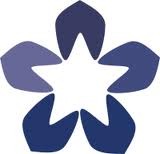
(View Complete Item Description)
This book is intended to give the non-expert an overview of standards and best practises related to publishing metadata about works. Its primary focus is metadata from cultural heritage institutions - i.e. GLAM institutions (galleries, libraries, archives and museums).
The book was started to help us get to grips with diverse collections of metadata which we were interested in using to figure out which works have entered the public domain in which different countries. At the OKF, we have been working on the developement of automated calculation to determine the public domain status of a work (see http://publicdomain.okfn.org/calculators), and we soon realized that we often do not have the necessary metadata to accurately determine whether or not a work is in the public domain. We have obtained data from different sources, e.g. BBC, British National Library, but we need to combine this data in meaningful ways in order to achieve a more comprehensive set of metadata. This required us to engage in the process of vocabulary alignment, removing duplicate entries, understanding whether similar fields actually mean the same thing, and figuring out whether different data models are compatible with each others.
Material Type:
Reading
Author:
Public Domain Working Group & Open Knowledge Foundation
















